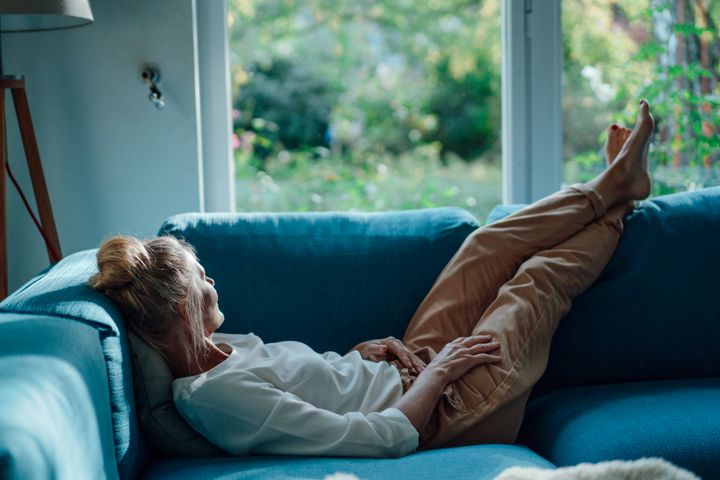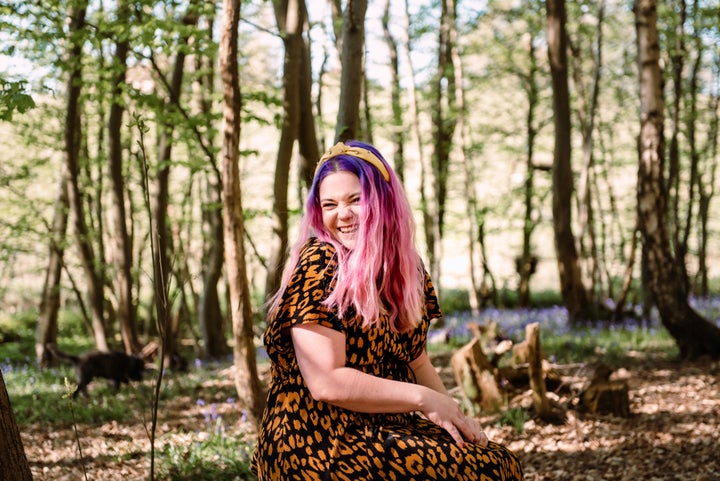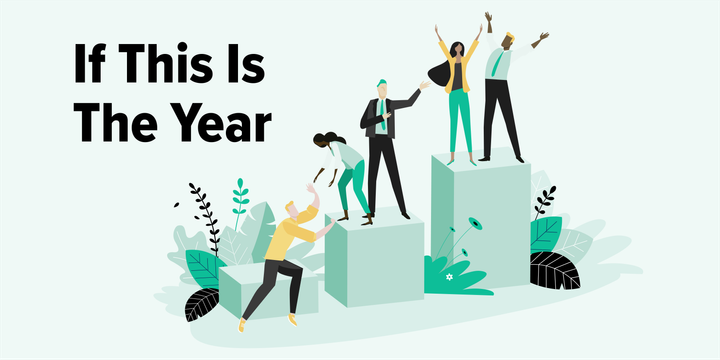
You’re reading If This Is The Year, a series of guides to tackling those big life goals the pandemic has put on hold – with the help of experts, we’re breaking things down into more manageable steps to take in 2022.
It took catching Covid-19 to make me slow down in 2021. I realise how bonkers that sounds as I read it back. But when a positive PCR result in the run up to Christmas forced me, like so many, into self-isolation, what could have been a miserable 10 days on my own actually came as some kind of relief.
The year had started intensely at work and didn’t let up, especially when big changes turned my job on its head in spring. I ploughed through summer in coping mode and thought I was managing until, mid-autumn, I crashed into a wave of work anxiety so big it convinced me that I was failing at everything.
It’s not an uncommon tale, says Bex Spiller, founder of The Anti-Burnout Club (ABC), a wellbeing collective that has worked with hundreds of NHS and key workers.
“Burnout is on the rise simply because the amount we feel we have to do is on the rise,” she tells me. “Look back 50 or 60 years ago and you’ll find there was a lot less on people’s ‘to do’ lists than there is now.”
In a digital age, “switching off” is not just a metaphor. As Spiller explains, the combination of pressures from work and society (“social media has a big part to play in this”) as well as our fears around health and job security all add up.
“You can see this even more during the pandemic when people are literally bringing their work home,” she says. “It feels even harder to switch off (‘Oh, I best just check my emails’ in the middle of downtime). We feel as though we need to prove that we can be productive working from home, too.”
For me, it was a benign manager who helped me recognise and name my anxiety and convince me to swap my perceived work “to do” list for a wellbeing one: of sleeping and eating properly, and giving myself a break.
When I checked my holiday allowance, I realised I’d not taken more than a day off between April and September – and burnout was the result. Even then, I delayed on booking my remaining days. Then Covid forced the issue. But, never mind asking our bosses for a break. How do we give ourselves permission?
“This is normally the biggest part of the battle for most people,” says Spiller. “It’s quite common to be stuck in the mindset of ‘it’s lazy’ or ‘unproductive’ to relax, but actually it’s quite the opposite. Research has shown that our brains aren’t designed for constant productivity (or 8-hour work days), so it’s more productive to design your days around some work and some rest.”
So, breaking your own aversion to breaks is the first step. “I’d question what your preconceptions are about relaxing to dig into what might be holding you back,” Spiller says. “Do you think it’s lazy or unproductive? We know that’s not true. Do you think improving your wellbeing is just what you see on Instagram? Yoga on sandy beaches or silent retreats in the woods? If so, don’t forget that the social media world is not always the real world.”
Therapy can help, Spiller says. “Our therapists at The ABC have some great lessons on this, including one on Conditions of Worth (what makes you think you have to do it all?) and managing our expectations of ourselves. Therapy may help you question some of those preconceptions and give yourself permission to relax.”
Learning – and allowing yourself – to relax takes time, but here are some steps towards making it part of your regular routine.
Step 1: Add a ‘happy habit’ to your routine
“It’s quite common on New Year’s Day to wake up ready to overhaul your whole life with a plan to add all these different things into your routine in an effort to feel more relaxed,” says Spiller. “Do you know what’s going to happen if you try to do it all at once? You’ll get overwhelmed and burn out!”
Instead, Spiller recommends adding what she calls a new “happy habit” to your self-care routine. “Perhaps start with finding 10 minutes a day to read or switch off. Once that becomes a habit, add in something else like yoga or breath work. Build slowly and you’ll see far better results than trying to cram in all the wellness at once – which is a one way ticket to overwhelm!”
Step 2: Find the thing(s) that work for you
The first relaxation activity you try isn’t always going to be the one that sticks. Use spring to enjoy and experiment with different thing that might help you unwind, whether’s that yoga, swimming or running (say with the Couch to 5K app); going to the cinema, an art gallery or on long walks; or a hobby at home such as cooking, knitting or simply completing Netflix.
“You may try yoga and decide it doesn’t work for you, but that you love Pilates instead,” says Spiller. “Maybe trying to meditate makes you feel awkward, but you enjoy little moments of mindfulness. There is no ‘right way’ to relax and finding the things you really love will ensure it’s easier to stick to them. You don’t want relaxing to feel like a chore!”
Step 3: Prioritise breaks in your calendar
This is key. “Schedule in your downtime as if it’s an important appointment,” Spiller urges – and it’s golden advice.
“Many of us put off time to relax because there’s always something more pressing to do (or so we think). I like to encourage people to actually schedule in downtime as if it’s a really important appointment that you can’t wiggle out of – a bit like going to the dentist, but far more enjoyable.
“Add it to your calendar, your diary, or wherever else you like to schedule things and promise yourself that you won’t stand yourself up! You can start with five or 10 minutes a day, then slowly build on this like point one.”
This also applies to booking and using your annual leave. You shouldn’t go for longer than three months without having at least a week off. In fact, why not map out your leave at the start of the year? You can always move it at a later date.
Step 4: Learn how to breathe!
Breath is a constant in your life, but it’s one of the hardest things to maximise for your own wellbeing. That’s why it’s something yoga teachers always come back to in class.
“When I first tried breath work, I couldn’t quite believe how I felt afterwards,” says Spiller. “At The ABC, we have a breath work teacher called Charlie Moult (who also teaches breath work to stressed out Google employees) and her lessons are some of the most popular for a reason.
“Conscious breathing can activate the parasympathetic nervous system (also known as the ‘rest and digest’ system) to help alleviate stress, bring more calm, and make you feel super relaxed. It’s like having a super power at your fingertips in just 10 minutes.”
A tip from someone who’s done it

Bex Spiller is living proof of her own methods. Before setting up The Anti-Burnout Club in January 2021, the 32-year-old from Tunbridge Wells had been running a content agency for almost a decade.
“I was working 12+ hour days, not giving myself any time to relax or switch off, and I found out I had high cortisol (the stress hormone) and blood pressure,” she says. Spiller’s dad had died from stress-related heart disease a few years before. “When I hit 30 I just thought: ‘That could be me.’”
Changing course was easier said than done. “I was so sucked into hustle culture and other people’s expectations of me (and therefore the expectations I put on myself),” she admits. “I thought that in order to be successful I’d need to be ‘hustling hard’ and that it would all pay off in the long run. I then read something that kind of said ‘How do you want people to remember you?’ and I imagined someone standing up at my funeral saying ‘Well, she worked long hours and uhh, we never really saw her…’”
That simple epiphany made her realise there was more to life than long days and making money. “I realised I needed to re-evaluate my priorities and what I wanted from life, and that meant more time for me, to learn more, to be creative, and to help other people. And so The ABC was born!”
Her biggest tip would be not to forget the basics. “We have our own evidence-based framework called The Five Foundations of Wellness at The Anti-Burnout Club... The first foundation is called the basics, which covers staying hydrated, eating nutritious food, and getting enough sleep.
“We can often forget about the basics in place of perfecting our tree pose or trying to meditate for longer than five minutes without getting distracted. However, our bodies and minds need enough water, sleep and nutritious food to function as best as they can – so this step shouldn’t be skipped!”
The Anti-Burnout Journal by Bex Spiller (David & Charles) is published on January 1, 2022 for £15.72.
